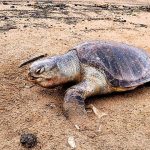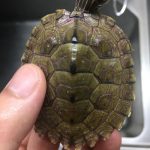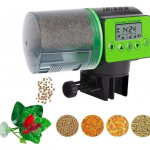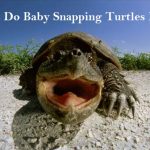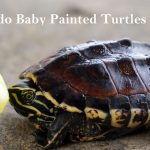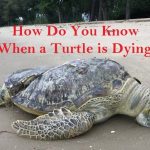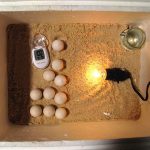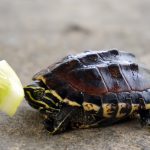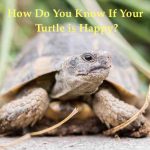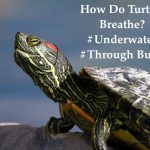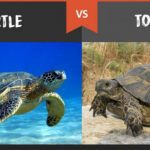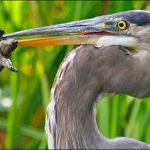Turtles
26 Types of Turtles in Georgia #Laws in Georgia
Turtles are amazing creatures, and we are very passionate about them. But, did you know Georgia is the home to 26 different Turtle species? Yeah, that’s fairly a big number, right? And, if we talk about the whole US, it would be good for you to know the fact that the country is the home to more Turtle species than any other country on this planet. Approx 18% of the world’s Turtle population is found in the US but they are not evenly distributed within the country. Few states/cities have a big population of Turtles whereas few have almost no population at all as well.
Well, here in this post we shall talk about different types of turtles in Georgia. So, let’s dig deeper to know everything about them.
Note: In this article “Turtles” includes both ‘Turtles’ and ‘Tortoises’
Recommended Reading : Turtles that stay small
Contents
26 Different Types of Turtles in Georgia #Images

Yellowbelly Slider Turtle
Scientific Name: Trachemys Scripta Scripta
Life Expectancy: 50-100 Years
Size: 8 to 12 inches
This is one of the types of Turtles in Georgia that is endangered. As the name says it all, the Yellowbelly Slider Turtle has yellow-coloured belly with black spots. The upper part of the shell is dark-colored with no distinctive pattern.
Habitat: Yellowbelly Slider usually lives in the slow-moving water such as Ponds, small rivers, and lakes.
Diet: Yellowbelly Slider Turtles are Omnivores.

Loggerhead Musk Turtle
Scientific Name: Sternotherus Minor
Life Expectancy: 20 to 40 Years
Size: 3 to 4 inches
Loggerhead Musk Turtles are another type of Turtles in Georgia, and these are vulnerable which means that if the circumstances don’t improve for their survival and reproduction they will be endangered soon. They have scutes in the middle of their shell which look prominent when they are in small age but as they age this feature becomes less visible. Usually, the upper part is light brown, and the lower part is colored light brown or sometimes yellow. Loggerhead Musk Turtles are one of the smallest turtle species in the United States.
Habitat: They generally live in slow-moving or still water.
Diet: Loggerhead Musk Turtles are carnivores. Their diet generally includes fish and snails.
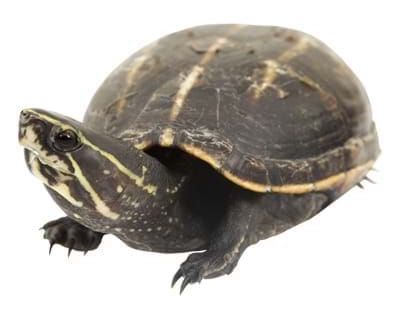
Striped Mud Turtle
Scientific Name: Kinosternon Baurii
Life Expectancy: 15-20 Years
Size: 3 to 5 inches
Striped Mud Turtle is the smallest mud Turtle. It has yellow stripes on its head, and 3 vertical stripes on the shell as well. It is well found in Florida. However, they are found in Georgia as well but most of the Striped Mud Turtles of Georgia and Carolina lack these above-mentioned stripes but they do have light stripes in-between eye and the nostril.
Habitat: They are muddy creatures that means they prefer to stay in the water bodies with a muddy bottom.
Diet: Striped Mud Turtles are Omnivores that means they eath both the meat and fruits & vegetation.

Spotted Turtle
Scientific Name: Clemmys Guttata
Life Expectancy: 100-150 Years
Size: 3 to 4 inches
Spotted Turtle is another type of turtle in Georgia which is already endangered. They have a dark-colored shell with yellow spots on them. The lower part of the shell is normally yellow or orange with a black pattern. The head color is also dark black with yellow spots. That is the reason these are known as Spotted Turtle.
Habitat: Marshes, wet grassland, lakes, swamps, bogs, and shallow borders of ponds.
Diet: Spotted Turtles are omnivores. They eat vegetation and animals that have no backbone(invertebrates).

Red Eared Slider
Scientific Name: Trachemys Scripta Elegans
Life Expectancy: 30-40 Years
Size: They reach up to 7 to 12 inches.
Red Eared Slider Turtles are the least concerned species for which there are no plans to save them. So, they will likely be endangered soon. It got its name because of having red color around its ear, and it also has the ability to quickly slide through rocks and slip into the water. Red Eared Slider Turtles are the most popular pet in the US and the whole world, and that is the reason they are the most traded turtles as well.
Habitat: They generally live in slow-moving water bodies such as marshes, lakes, ponds with a little warm and freshwater.
Diet: Red Eared Slider Turtles are omnivores which means they eat both meat, insects, fish, and vegetation.

Midland Painted Turtle
Scientific name: Chrysemys Picta Marginata
Life Expectancy: 20-30 Years
Size: 5 to 7 inches
Midland Painted turtle is a subspecies of Painted Turtle, and it is also of least concern. Its bottom shell has a characteristic symmetrical dark shadow in the center that varies in size and prominence. The shell is light dome-shaped. The shell color can be of various colors such as olive or green or dark. There are yellow lines behind the eyes.
Habitat: Midland Painted Turtle including other Painted Turtle subspecies live in the slow-moving freshwater such as lakes, ponds, etc.
Diet: Midland Painted Turtles are omnivores which means they eat both meat and veggies.

Hieroglyphic River Cooter
Scientific name: Pseudemys Concinna Hieroglyphica
Life Expectancy: 20-40 Years
Size: 8-12 inches
Hieroglyphic River Cooter Turtles are the least concerned Turtle species which means there is no plan on saving this species. These Turtles’ shell is covered with red and orange pattern which looks like hieroglyphs and that is why this is added to their name. They can be green, black or brown in color, and the lower part of the shell is light-colored.
Habitat: They live in Ponds and lakes generally but they can also live in manmade habitats.
Diet: They are omnivores which means they eat both meat and vegetation but they prefer vegetables and fruits over meat (insects, snails, etc.)

Gulf Coast Spiny Softshell Turtle
Scientific Name: Apalone Spinifera Aspera
Life Expectancy: 40-60 Years
Size: Males 5 to 10 inches while females 9 to 20 inches
Gulf Coast Spiny Softshell Turtle is a subspecies of softshell Turtles. They look very different from other Turtle species as their carapace is quite flat but there is a small bump on its shell at the front. The color of the upper part of the shell is light grey or olive with dark spots. Its nose is pointed one and that is quite different from other species. The species is also the least concerned one.
Habitat: They live in rivers, lakes, ponds, marshes, etc.
Diet: They are meat eaters (Carnivores). They eat fish, snails, and other small aquatic animals.

Gopher Tortoise
Scientific Name: Gopherus Polyphemus
Life Expectancy: 40-60 Years
Size: 10-15 inches
About
Gopher Tortoise is a Tortoise which has the upper part of the shell is dark grey while the lower part is yellow with dark patterns. The Skin color is similar to the shell color only. This species is in the vulnerable state, and likely to be endangered soon.
Habitat: Tortoises are land dwellers. They live in deep burrows dug by them which can have multiple entrances.
Diet: They are herbivores that means they eat vegetation and fruit.

Florida Softshell Turtle
Scientific Name: Apalone Ferox
Life Expectancy: 20-30 Years
Size: 10-12 inches
Florida Softshell Turtle is another softshell Turtle on our list, and as the name says their shell is soft and plain-looking one. However, it has small bumps as well. Their nose is pointed towards the front. The color of this Turtle can be olive-grey to dark brown. Head color is also similar but in the light shade, and the bottom part is a bit creamy colored. It is the least concerned species.
Habitat: They are mainly found in lakes but they can live in any water bodies with slow-flowing or still water.
Diet: They primarily eat fish and snails which means they are carnivores.

Florida Redbelly Turtle
Scientific Name: Pseudemys Nelsoni
Life Expectancy: 40-60 Years
Size: 8-14 inches
Florida Redbelly Turtle has a prominent dome-shaped carapace. The color of the shell is dark brown or black just like its skin. However, its skin is covered with many yellow stripes. The bottom part is red or orange coloured.
Habitat: Though they prefer to live in lakes or canals, they can live in all water bodies with either slow-flowing or still water.
Diet: Florida Redbelly Turtles are herbivores which means they are vegetable/fruit eaters.

Florida Cooter Turtle
Scientific Name: Pseudemys Floridana
Life Expectancy: 20-40 Years
Size: 8-12 inches
Florida Cooter Turtles have a flattened shape that distinguishes them from other Turtle species. Their shell has a dark color with a yellow or orange pattern on that. There are yellow stripes on the head.
Habitat: They live in the water streams. They prefer to live in ponds or lakes.
Diet: They eat both meat and vegetation but they prefer vegetation over meat.

Photo Credit: nature.mdc.mo.gov
Eastern River Cooter Turtle
Scientific Name: Pseudemys Concinna
Life Expectancy: 20-40 Years
Size: 8-12 inches
Eastern River Cooter Turtle has olive, dark brown or black colored shell at the top and the bottom part is yellow or light grey colored. The shell has yellow concentric yellow lines.
Habitat: They live in various water streams but prefer to stay in Lake or Ponds.
Diet: They eat both veggies and meat but they prefer veggies over meat.

Eastern Painted Turtle
Scientific Name: Chrysemys Picta
Life Expectancy: 20-30 Years
Size: 5-7 inches
Eastern Painted Turtles have dark olive or complete black colored skin as well as the Shell. However, the edges are different such as red, yellow or orange. The bottom part of the shell is normally yellow. The skin is covered by various yellow stripes.
Habitat: Eastern Painted Turtles live in freshwater such as river but they do live in ponds and lakes as well.
Diet: They are omnivores which means they eat both veggies and meat.

Eastern Mud Turtle
Scientific Name: Kinosternon Subrubrum
Life Expectancy: 30-40 Years
Size: 5-7 inches
The Eastern Mud Turtle doesn’t have any patterns on the shell and also that is not dome-shaped. Not even there are bumps. The shell is quite uniform, and the lower part is also plain. However, white or yellow stripes are there on their head. The shell color is dark yellow or black.
Habitat: As the name says it all, they prefer to live in the muddy water bodies such as marsh, lakes, ponds, etc.
Diet: Eastern Mud Turtles are omnivores that means they eat both the vegetation and meat.

Photo Credit: theturtlesource.com
Eastern Chicken Turtle
Scientific Name: Deirochelys Reticularia
Life Expectancy: 15-30 Years
Size: 5-10 inches
Eastern chicken Turtle’s shell has a shape of a chicken egg, and that is why the name. The shell color is of dark brown or black with various small patterns on it. The lower part of the shell is usually yellow in color. The head and other skin parts of this Turtle is dark-colored with yellow stripes.
Habitat: Eastern Chicken Turtles live in slow-moving or still water such as ponds, marshes, sandhills, etc.
Diet: Eastern Chicken Turtles are omnivores which means they eat both meat and vegetation.

Eastern Box Turtle
Scientific Name: Terrapene Carolina
Life Expectancy: 50-100 Years
Size: 5-7 inches
Eastern Box Turtles have a dome-shaped shell that can be brown to black in color. Their body color is also dark but there are red or orange spots all over the body from shell to skin. The spots are in prominence on their body. Eastern Box Turtle is a subspecies of the common Box Turtle. They are vulnerable species.
Habitat: They live on the land instead of water. They are found in grasslands and woodlands mainly.
Diet: They eat almost every edible thing they find in their way. So basically they are omnivores.

Common Snapping Turtle
Scientific Name: Chelydra Serpentina
Life Expectancy: 30-50 Years
Size: 12-15 inches
Common Snapping Turtles are in brown and black color. It has a beak-like mouth that is projected ahead. Their legs, tails, and neck are longer than other turtles.
Habitat: They live in almost all water bodies that have muddy bottoms.
Diet: They eat both meat and vegetation.

Common Musk Turtle
Scientific Name: Sternotherus Odoratus
Life Expectancy: 30-50 Years
Size: 3-4.5 inches
Common Musk Turtle’s shell and skin colors are same. They can be brown or black in color. They have two light-colored stripes on their head.
Habitat: They live in slow moving and still water bodies.
Diet: They are omnivores. That means they eat both aquatic animals and vegetation.

Common Map Turtle
Scientific Name: Graptemys Geographica
Life Expectancy: 30-50 Years
Size: Males 3-5 inches, and Female 8-10 inches
Common Map Turtles are brown or black colored. They are called Map Turtle because they have map-like structure on their shells. The bottom part of the shell is light-colored. Their skin is covered with light-colored stripes.
Habitat: They live in the slow-moving or still water there they find more vegetation to eat.
Diet: They are omnivores.

Carolina Diamondback Terrapin
Scientific Name: Malaclemys Terrapin Centrata
Life Expectancy: 25-35 Years
Size: 4-8 inches
Carolina Diamondback Terrapin is a species of Turtles that is light-colored, and they can be easily distinguished due to the color because most of the Turtles are dark-colored. The skin is of light gray or white color and they are covered by black spots. Shell is brown in color usually which can have dark patterns. This species is in a vulnerable state.
Habitat: They mainly live in a bit salty grasslands/marshes.
Diet: They are carnivores which means their primary and main food is meat which includes insects, fish, and small animals.

Bog Turtle
Scientific Name: Glyptemys Muhlenbergii
Life Expectancy: 30-40 Years
Size: 3-4 inches
Bog Turtle is the smallest Turtle of North America. It has the same color on the skin and shell. However, there are yellow or orange spots on its head that distinguish it from other Turtles. These are Critical species of Turtles which means they are high chances that they will go extinct in near future.
Habitat: They live in bogs or wet grasslands, and that is the reason they are called Bog Turtles.
Diet: They are Omnivores which means they eat both plants and meat.

Photo Credit: U.S. Geological Survey Department of Interior/USGS
Barbour’s Map Turtle
Scientific Name: Graptemys Barbouri
Life Expectancy: 30-50 Years
Size: Males can go 3-5 inches and females can go 8-10 inches
These are one of the most distinguished types of turtles in Georgia. Barbour’s Map Turtle has something that distinguishes it from all other Turtles we have mentioned on this list, and that is the spine in the middle of its shell, and that have dark tips at the end. They are of light brown or black color.
Habitat: They live in slow moving or stagnant water bodies that have lots of vegetation.
Diet: They are omnivores means they eat both meat and vegetation.

Alligator Snapping Turtle
Scientific Name: Macroclemys Temminckii
Life Expectancy: 60-70 Years
Size: 15-26 inches
Alligator Snapping Turtle is a vulnerable species of Turtles. The upper part of their shell has spikes all over, and that make it look like an Alligator. That is why it got the name. Their mouth is also projected like a beak. They are very different looking Turtle species. They are usually black or brown in color.
Habitat: They live at the bottom of rivers, lakes, and various other water bodies.
Diet: They are omnivores. They eat both veggies and meat. They usually sit at the bottom of the water and keep their mouth open and wait for their prey.

Alabama Map Turtle
Scientific Name: Graptemys Pulchra
Life Expectancy: 30-50 Years
Size: Male – 3-5 inches, and Female – 8-10 inches
Alabama Map Turtle can be of different color range from green to black to brown. The upper part of the shell looks like a map, and thus they are called Map Turtles. The lower part of the shell is yellow-colored. They have yellow stripes/patterns on their skin.
Habitat: They live in stagnant or slow-moving water bodies.
Diet: They are omnivores.

Photo Source: Petguide.com
Stripe-Necked Musk Turtle
Scientific Name: Sternotherus Minor Peltifer.
Life Expectancy:
Size: 3-4 inches
Stripe-Necked Musk Turtle looks like other Musk Turtles. Ther carapace is keeled and features overlapping vertebral scutes. There are barbels on the chin, and males will have a bigger head and a longer tail than females. They are in various color ranging from olive to brown to olive-brown.
Habitat: They are found in springs, ponds, creeks, rivers, and wetlands. They are more commonly found around snags and fallen trees over a soft substrate.
Diet: They generally eat snails, fish, and other small aquatic animals, but they eat aquatic plants/vegetables occasionally as well.
This completes the different types of Turtles in Georgia with some information about each of them. Now, let’s have some more information about Turtles and law associated with them in Georgia.
Georgia Turtle Laws You Must Know
Let’s understand with a few FAQs:
More about the Turtle Law in Georgia
- Owning these Turtles is illegal in Georgia:
- Bog Turtles
- Box Turtles
- Diamondback Terrapins
- Gopher Tortoises
- Map Turtles
- Spotted Turtles
- Owning any Sea Turtle(Loggerhead turtles, Green sea turtles, Leatherback turtles, etc.) is illegal in Georgia.
- You can have up to 10 freshwater Turtles without any commercial license. But, owning more than 10, you must need the license or permit from the state government.
- Although you have the permit/license, there are certain numbers for different Turtle species that you can have. This means even with a license you cannot have more than what is permitted. Below is the list:
- Florida Softshell Turtle – 100
- Spiny Softshell Turtle – 100
- Common Snapping Turtle – 300
- Painted Turtle – 300
- Eastern Mud Turtle – 300
- River Cooter – 100
- Loggerhead Musk Turtle – 300
- Common Musk Turtle – 300
- Pond Slider – 1,000
- Striped Mud Turtle – 300
- It is illegal to remove Turtles from State Parks, private land, Wildlife Management Areas or historic areas without permission.
- It is illegal to remove eggs from wild areas.
There are many law enforcement to save these types of Turtles in Georgia. If there would be no law, people would still be hunting down the turtles and trade. So, to protect them the laws are enforced.
Concluding Thoughts
If you think why it is so important to save the Turtles, then the answer is that to keep the balance of nature every creature that is made by nature must live. If you remove any creature or their species completely, there must be some adverse effects in the environment. Sometimes the effects are visible and sometimes they are not directly visible.
But remember, when we destroy what nature has created, there are always some bad effects on us and our surroundings. Thus, to save these Turtles, laws are made. Specifically, the laws are strict when it comes to Endangered species because they are already on the verge of extinction so the government tries their best to protect them.
Disclaimers
- We are not lawyers, and we do not know the law, we have just gathered information from various government websites to find these laws and listed them here for your information.
- The complete article is for information only, if you really want to own a Turtle as a pet make sure to educate yourself about the laws and confirm with the state government.

-
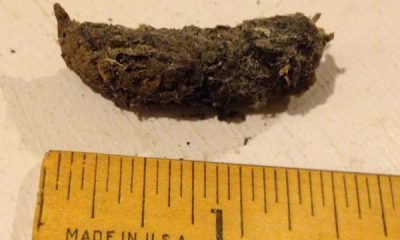
 Skunk4 years ago
Skunk4 years agoWhat Does Skunk Poop Look Like? Images & Identifications
-
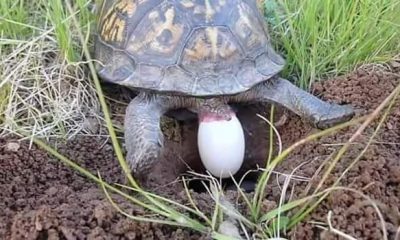
 Turtles4 years ago
Turtles4 years agoHow To Take Care of Turtle Egg At Home?
-

 Bunny4 years ago
Bunny4 years agoHow to Get Rid of Mites on Rabbits? #NaturalRemedies #Video
-
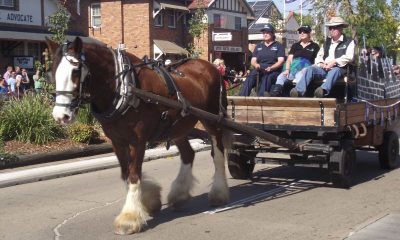
 Horse4 years ago
Horse4 years agoHow Much Weight Can a Horse Carry? #Clydesdale #Friesian #Mustang #Draft
-

 Turtles4 years ago
Turtles4 years agoHow to Take Care of Snapping Turtle Eggs? #Incubating #Hatching
-
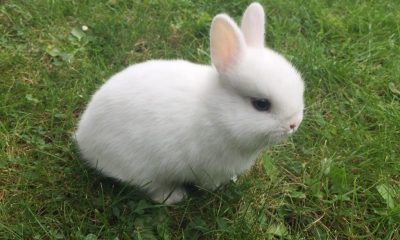
 Bunny4 years ago
Bunny4 years agoHow Big Do Dwarf Bunnies Get? – Amazing Facts #Images
-

 Bunny4 years ago
Bunny4 years agoHow to Potty Train a Rabbit in House? Tips on Litter Training
-
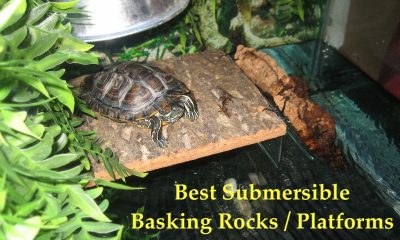
 Turtles4 years ago
Turtles4 years ago8 Basking Rocks/ Platforms for Turtles – A Perfect Guide

